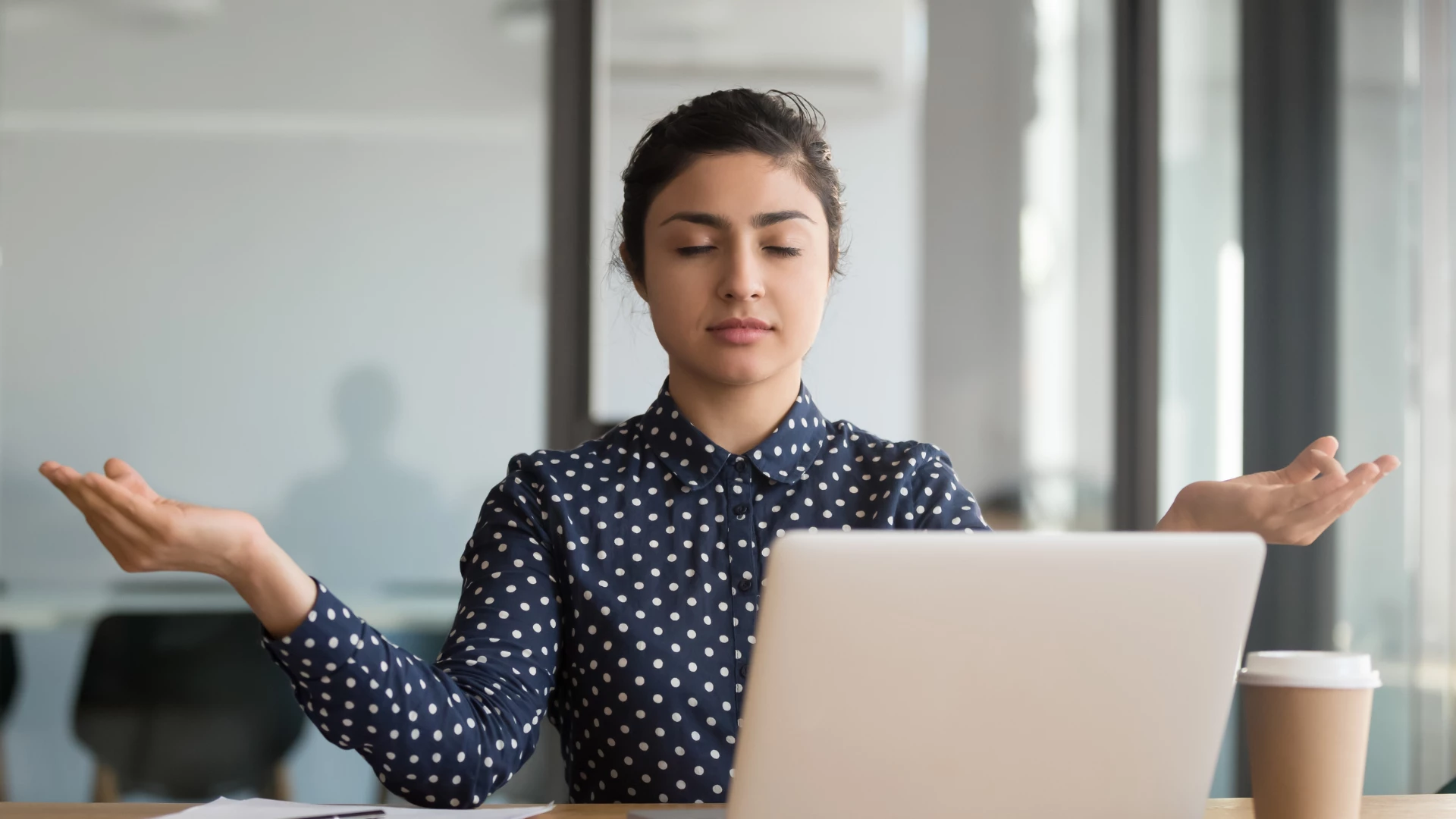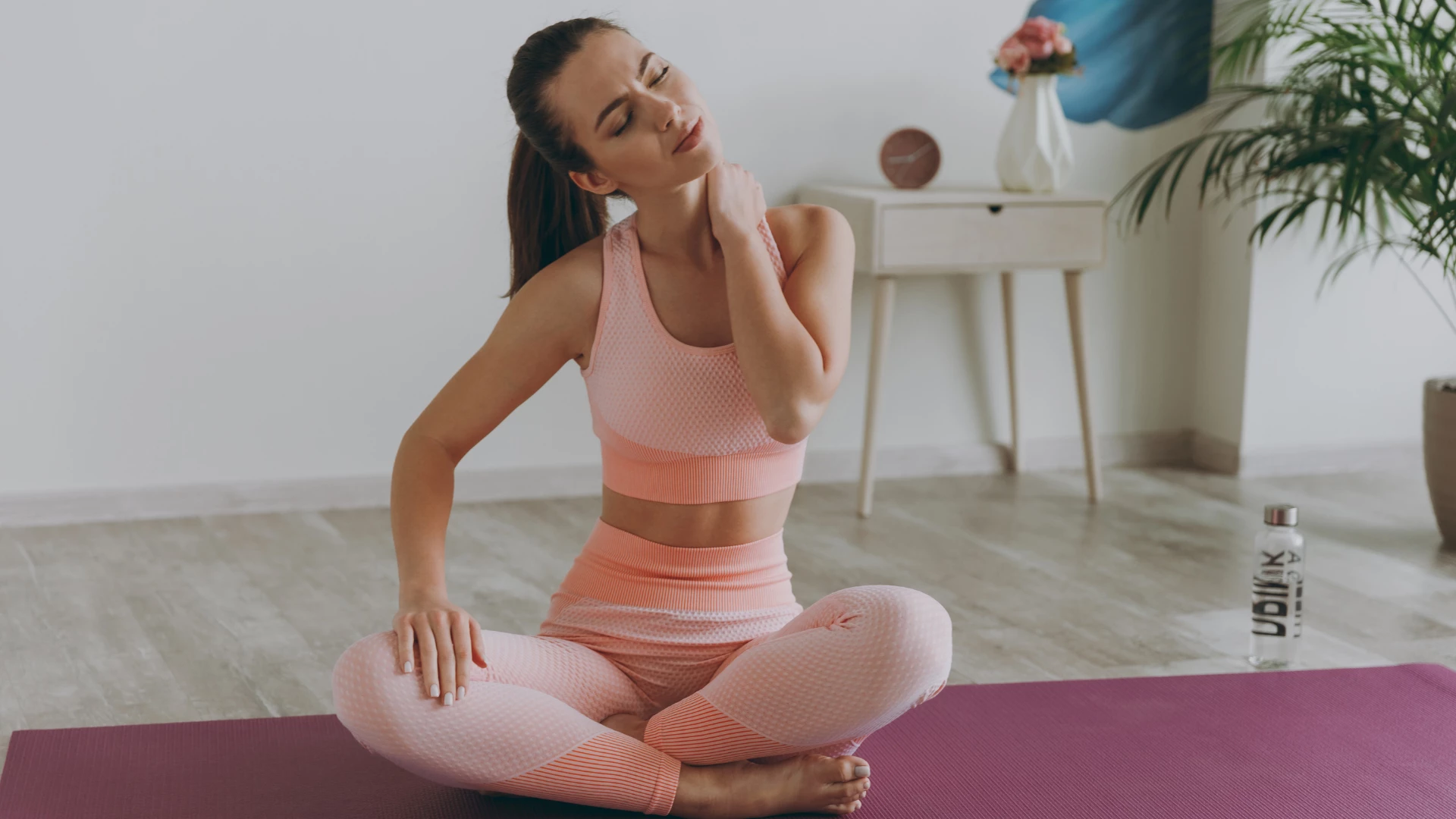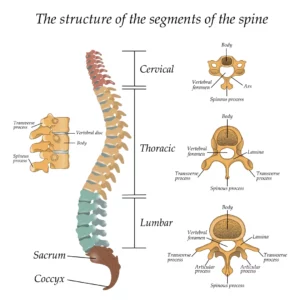7 Steps to Freedom from Neck Tension

Article At A Glance
How do we deal with different kinds of neck and upper back tension to achieve long-lasting results? While massage and acupuncture can be helpful, changing our habits and developing healthier ones is the best way to bring about durable relief. This article explores four ways to address the underlying causes of neck tension and three ways to incorporate neck relief into our yoga practice.
We recently explored three main patterns that produce neck tension. The main question is: how do we deal with different kinds of neck and upper back tension and achieve long-lasting results?
4 Ways to Work with Neck Tension
Here are four main steps we need to take to deal with your current discomfort and to prevent future occurrences:
-
Investigate Your Discomfort

First, to get more clarity about the causes of your neck tension, you need to be precise about where you experience it. Once you pinpoint the location of your discomfort, you might be able to link it to some habitual activity. Do you feel it mostly on one side of the neck? Evaluate the positioning of your computer screen to make sure that you are not looking to one side all day long. Is it linked to the movement of your arm? Notice how you use that arm in the course of your day. Do you feel your shoulders shrugging toward the ears? Evaluate your stress level and ramp up your stress management strategies. These are some examples of what might be going on. Use this assessment practice to observe what’s going on in your body, and then try to figure out how you acquired that pattern of tension.
-
Reduce or Eliminate Activities that Cause Neck Tension
Be mindful of how you move and position your body during your day. Place your computer screen directly in front of you, elevate the position of your laptop, alternate which arm you use for your tasks, stop displacing your head forward when you look at your phone, take breaks, and so on. If you continue to engage in behaviors that create your neck tension, you will continue to experience neck tension, no matter how much yoga you do or how many massages you get.

-
Relax Your Eyes
Eye strain is a big contributor to neck pain and tension headaches. If you spend much of your time in front of a screen, try following the 20-20-20 rule, which means taking a 20-second break from the screen every 20 minutes by looking at least 20 feet away. This helps to relax your eye muscles.
-
Manage Your Autonomic State

The two major muscles of the neck and upper back (trapezius and sternocleidomastoid) are innervated by the cranial nerve XI (also called “spinal accessory nerve”), which is intertwined with the famous Vagus nerve that regulates the state of our autonomic nervous system. This tells us that the tone and activity of the major neck muscles are closely tied to the state of our autonomic nervous system. You can calm your nervous system by resting in comfortable, supported positions, deep, relaxed breathing, soothing sounds, or any activities that make you feel peaceful and content. This will help relax your neck muscles, as well.
How to Relieve Neck Tension in Your Yoga Practice
When you are ready to work with neck and upper back tension in your yoga practice, there are three main steps you need to take to relieve neck tension:
Step 1: Retrace Your Evolutionary Steps from Baby to Toddler 
- Use Cobra Pose (Bhujangasana) to imitate the baby on the stomach, lifting your head and upper body up to begin awakening your trapezius muscles,
- Spend time on your hands and knees doing kneeling postures (such as crawling) with various head movements to awaken the trapezius and sternocleidomastoid in a partial weight-bearing position,
- Focus on proper head alignment over the ribcage in standing postures to support muscular organization in an upright position.
Step 2: Relieve Tension with Intentional Head, Thoracic Spine and Arm Movements

Just like a tree needs to have an extensive root system to support the weight of the trunk and the crown, your neck requires extensive muscular connections to the ribcage, thoracic spine, and shoulder girdle to support the weight of the head and allow for incredible mobility. To release neck tension, we need to do more complex movements that include the movement of the head, thoracic spine, and the shoulder girdle (via the movement of the arms).
- Head movements include tucking the chin in and lifting it up, turning the head, leaning the head, and making the head follow the sweeping motion of the arm.
- Thoracic movements include rounding and flattening of the thoracic spine, rotating it, flexing it sideways, and elongating it upward by lifting the vertebrae off each other.
- Arm movements include horizontal and vertical sweeping, pushing, and pulling in non- and partial weight-bearing positions.
All those moments can be done by themselves or added to more traditional poses.
Step 3: Create Support
 The shapes of your spinal curves are dependent on one another. That is why you need to provide a foundation for your cervical (neck) curve by aligning all your curves on top of each other and supporting their shape. For example, your thoracic (upper back) curve might be more or less pronounced, resulting in a more curvy or flatter upper back. Those with curvier upper backs tend to slouch, and those with flatter upper backs tend to hold a lot of tension between the shoulder blades. Through our yoga practice, we can counteract those tendencies while at the same time supporting our natural curves.
The shapes of your spinal curves are dependent on one another. That is why you need to provide a foundation for your cervical (neck) curve by aligning all your curves on top of each other and supporting their shape. For example, your thoracic (upper back) curve might be more or less pronounced, resulting in a more curvy or flatter upper back. Those with curvier upper backs tend to slouch, and those with flatter upper backs tend to hold a lot of tension between the shoulder blades. Through our yoga practice, we can counteract those tendencies while at the same time supporting our natural curves.
Also, read...
7 Steps to Freedom from Neck Tension
Has Evil Qi Settled in Your Joints? Yin Yoga Can Help
5 Yoga Moves for Hands and Wrists
Related courses
Breath as Medicine: Yogic Breathing for Vital Aging
Yoga and Myofascial Release: Releasing Chronic Tension with the Bodymind Ballwork Method
Yoga and Detoxification: Tips for Stimulating Lymphatic Health

Educated as a school teacher, Olga Kabel has been teaching yoga for over 14 years. She completed multiple Yoga Teacher Training Programs but discovered the strongest connection to the Krishnamacharya/ T.K.V. Desikachar lineage. She had studied with Gary Kraftsow and American Viniyoga Institute (2004-2006) and received her Viniyoga Teacher diploma in July 2006, becoming an AVI-certified Yoga Therapist in April 2011. Olga is a founder and managing director of Sequence Wiz— a web-based yoga sequence builder that assists yoga teachers and yoga therapists in creating and organizing yoga practices. It also features simple, informational articles on how to sequence yoga practices for maximum effectiveness. Olga strongly believes in the healing power of this ancient discipline on every level: physical, psychological, and spiritual. She strives to make yoga practices accessible to students of any age, physical ability, and medical history, specializing in helping her students relieve muscle aches and pains, manage stress and anxiety, and develop mental focus.



